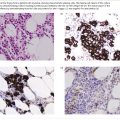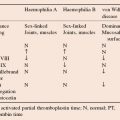The individual subtypes of B-cell or T-cell NHL are characterized by their clinical and histological features, immunostaining and chromosome changes. The features of some of the more common types are briefly described in Chapter 34. Some of the general features are reviewed here.
Aetiology and epidemiology
Non-Hodgkin lymphoma (NHL) occurs at all ages, with indolent tumours being most common in the elderly. There is clonal expansion from an abnormal cell. Environmental factors relevant to aetiology include abnormal response to viral infection, e.g. Epstein–Barr virus in Burkitt lymphoma (BL); human T-cell leukaemia virus (HTLV-1) in adult T-cell leukaemia lymphoma (ATLL); bacterial infection (e.g. chronic Helicobactor pylori infection in gastric lymphoma); and radiation or certain drugs (e.g. phenytoin). Autoimmune disease (e.g. Sjögren syndrome, rheumatoid arthritis) and immune suppression (e.g. HIV infection, post-transplant) also predispose to NHL. Chromosome translocations in NHL involving oncogenes and immunoglobulin genes include t(14;18) in follicular lymphoma (BCL-2 oncogene), t(8;14) in BL (MYC oncogene), and t(11 : 14) in mantle cell lymphoma. A point mutation in MY88, a gene involved in the Notch signalling pathway is present in nearly all cases of lymphoplasmacytic lymphoma. Other molecular events may be involved in full malignant transformation.
Clinical features
NHL is heterogeneous, but some common patterns occur.
Stay updated, free articles. Join our Telegram channel

Full access? Get Clinical Tree





